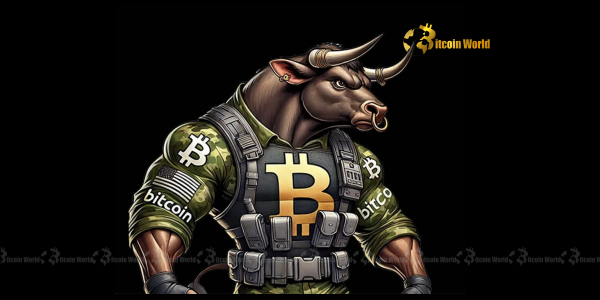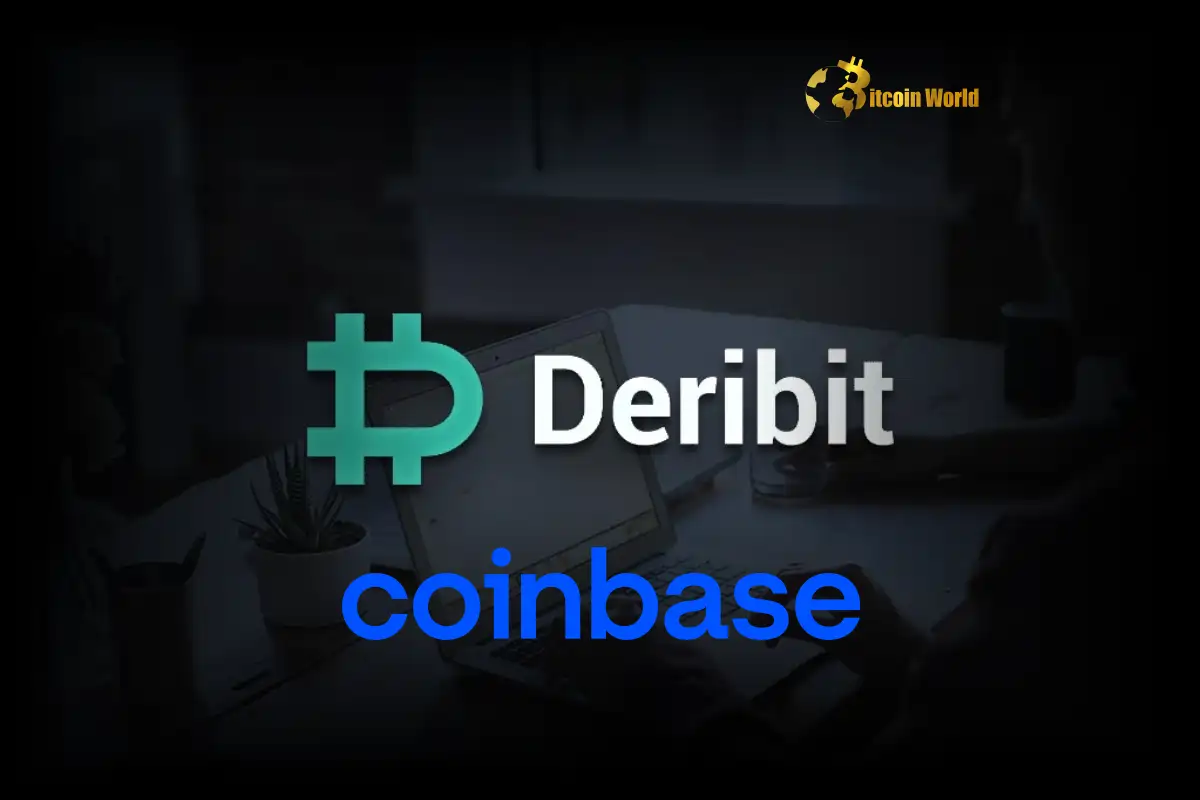BitcoinWorld

Bitcoin’s Bold Ascent: Why the Derivatives Market Signals Caution
The cryptocurrency world is abuzz! Bitcoin (BTC) has once again captured headlines, surging remarkably close to its all-time high. For many, this is a clear sign of renewed strength and a potential bull run. However, a deeper dive into the sophisticated world of the derivatives market reveals a more nuanced story. While the price action is undoubtedly exciting, professional traders are signaling a significant degree of hesitation, raising questions about the conviction behind this impressive crypto rally.
Understanding the Derivatives Market’s Hesitation on Bitcoin‘s Surge
When Bitcoin’s price approaches significant milestones, it’s natural for excitement to build. But seasoned investors and analysts often look beyond spot prices to the derivatives market for a clearer picture of professional trader sentiment. This market, which includes futures and options, provides valuable insights into how institutional players and experienced traders are positioning themselves.
According to Cointelegraph, despite BTC soaring above $109,000 and coming within 2% of its previous peak, key derivatives metrics are flashing yellow, not green. Here’s what we’re seeing:
- BTC Futures Premium: This metric, also known as the basis, measures the difference between futures contract prices and the current spot price. A healthy bull market typically sees a futures premium above 5%, indicating traders are willing to pay more for future exposure, expecting higher prices. Currently, the BTC futures premium remains below this neutral 5% level. This suggests a lack of aggressive long positioning and speculative buying from professional traders. They aren’t betting big on sustained price increases.
- 25% Delta Skew: The delta skew for Bitcoin options assesses the cost of call options versus put options at similar maturities. A positive skew indicates that call options (bets on higher prices) are more expensive than put options (bets on lower prices), reflecting bullish sentiment. A negative skew suggests bearishness. The fact that the 25% delta skew remains at 0% signals a perfectly neutral outlook. Traders aren’t paying a premium for upside protection or downside hedges, indicating no strong directional conviction. They’re essentially saying, “We don’t know which way it’s going, so we’re not committing.”
These two indicators, when combined, paint a picture of caution. While retail enthusiasm might be pushing the spot price, the smart money appears to be holding back, suggesting that this rally might lack the broad-based institutional support typically seen in robust bull markets.
Why is Trader Sentiment So Cautious Despite Rising BTC Price?
The discrepancy between Bitcoin’s rising price and the cautious derivatives market isn’t happening in a vacuum. Several macroeconomic factors and global uncertainties are likely contributing to this reserved trader sentiment:
- Global Economic Uncertainty: Persistent concerns over global trade tensions, potential economic slowdowns, and geopolitical instability create an environment of risk aversion. Even assets like Bitcoin, sometimes seen as a safe haven, are not immune to broader market jitters. Investors might be hesitant to commit large capital to riskier assets when the global economic outlook remains cloudy.
- Eurozone Monetary Expansion: While monetary expansion might theoretically support asset prices by increasing liquidity, its effectiveness and long-term implications are still being debated. Traders might be wary of the potential for inflation or other unintended consequences, leading them to exercise caution.
- Weaker U.S. Payroll Data: Softer economic data from major economies like the U.S. can signal a weakening global economy. This can lead to reduced consumer spending and investment, which in turn can dampen appetite for speculative assets.
These macroeconomic signals create a complex backdrop for Bitcoin. While some might interpret them as reasons for Bitcoin to shine (e.g., as a hedge against inflation or currency devaluation), others see them as reasons to remain defensive and cautious, especially given the asset’s historical volatility.
Regional Weakness and ETF Outflows: Further Dampening the Crypto Rally
Beyond the derivatives market, other indicators suggest underlying weakness in demand, further contributing to the hesitant trader sentiment surrounding the current crypto rally:
- Weak Crypto Demand in China: China has historically been a significant market for cryptocurrency. However, reports indicate that Tether (USDT), a stablecoin widely used for trading in the region, is currently trading at a 1% discount. This discount suggests an oversupply of USDT relative to demand, often indicating that local traders are selling off their crypto holdings and moving into fiat, or that capital controls are making it harder to acquire USDT. This is a notable shift from periods where USDT traded at a premium, signaling strong demand.
- BTC ETF Outflows: Tuesday saw a significant $342 million in outflows from Bitcoin exchange-traded funds (ETFs). ETFs were once hailed as a major driver for institutional adoption and increased demand. Consistent outflows, especially substantial ones, indicate that institutional investors or large holders are withdrawing capital from these accessible Bitcoin investment vehicles. This directly contradicts the narrative of strong, sustained institutional demand for Bitcoin at its current price levels.
These regional and institutional outflows are critical. They show that while Bitcoin’s spot price is climbing, the underlying demand from key segments of the market might not be as robust as the price action suggests. This creates a disconnect that experienced traders are keenly aware of, hence their cautious positioning in the derivatives market.
Navigating the Uncertainty: What Does This Mean for Your Portfolio and Bitcoin’s Price?
So, what should investors make of this mixed signal? On one hand, Bitcoin is demonstrating remarkable resilience, pushing towards new highs. On the other, the sophisticated players are not yet fully on board, raising concerns about the sustainability of this current upward trend.
Here are some actionable insights and considerations:
- Monitor Derivatives Closely: Keep an eye on the BTC futures premium and delta skew. A sustained increase in the premium above 5% and a positive delta skew would signal a shift in professional trader sentiment and stronger conviction behind the rally.
- Assess Macroeconomic Developments: Pay attention to global economic data, central bank policies, and geopolitical events. These factors significantly influence risk appetite and can either support or hinder further Bitcoin gains.
- Understand Regional Dynamics: While China’s market might be complex, the USDT discount is a tangible sign of reduced demand. Similarly, ongoing ETF flows provide a pulse on institutional interest.
- Risk Management is Key: In an environment of uncertainty, robust risk management becomes even more crucial. Consider setting stop-losses, diversifying your portfolio, and not over-allocating to a single asset, even one as compelling as Bitcoin.
- Long-Term vs. Short-Term: This analysis primarily focuses on short-to-medium term market dynamics. Long-term investors who believe in Bitcoin’s fundamental value proposition as a decentralized, scarce asset might view these fluctuations as temporary noise. However, short-term traders need to be acutely aware of these conflicting signals.
The current situation highlights the complexity of the crypto market. It’s not just about price, but also about the underlying conviction and demand from all market participants, especially the institutional ones who can move markets significantly.
The Road Ahead: Will the Crypto Rally Find Full Support?
The question on everyone’s mind is whether this impressive Bitcoin surge will eventually gain the full backing of the derivatives market. For a truly sustainable and robust bull run, we would ideally see futures premiums rise, delta skew turn positive, and strong inflows into institutional products like ETFs. Without this alignment, the current rally could be more vulnerable to corrections or consolidation.
The coming weeks will be crucial. Will the positive momentum in the spot market eventually sway the cautious professionals? Or will the hesitancy in the derivatives market act as a ceiling, preventing Bitcoin’s price from breaking out definitively to new all-time highs? The interplay between these forces will define the next chapter for the world’s largest cryptocurrency.
In short, while Bitcoin’s price is soaring, the derivatives market has yet to show full support for the rally. This creates a fascinating tension, reminding us that market analysis requires looking at all angles, not just the most obvious one. It’s a powerful reminder that even in a surging market, prudence and a comprehensive understanding of all market indicators are paramount.
To learn more about the latest Bitcoin trends, explore our article on key developments shaping Bitcoin price action.
This post Bitcoin’s Bold Ascent: Why the Derivatives Market Signals Caution first appeared on BitcoinWorld and is written by Editorial Team





